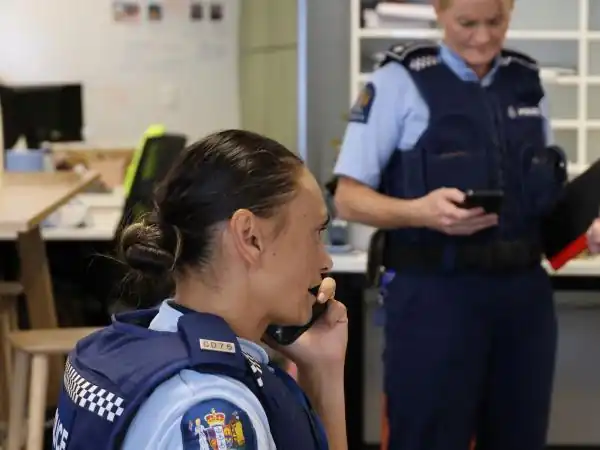
Eastern District Commander Superintendent Jeanette Park has today released data which shows crime largely returned to normal levels within a week after Cyclone Gabrielle hit.
Police deployed an extra 145 staff to the district* to support the initial response, and extra staff remain in the district to assist with the recovery phase.
“I know that crime and safety has been a concern for people in our community, particularly for those who are feeling more exposed to crime they are not used to seeing and this has been unsettling.
“I have attended many community meetings, and visited many homes and businesses, and I have heard first-hand, and seen for myself, how isolated and vulnerable people have felt, and how concerned they were for their property and their safety,” Superintendent Park says.
“Police data shows that during the week immediately after Cyclone Gabrielle hit, Hawke’s Bay and Tairāwhiti areas experienced a brief spike in crime but levels returned to normal by the following week.”
While difficulties with communications in the days straight after the cyclone impacted the volume of calls and online reports, Police activity during this time focused on maintaining high visibility in affected communities.
Police resources in Eastern District were initially focused on responding to an unfolding emergency that was putting people in dire, life-threatening situations, Superintendent Park says.
“Daily 111 calls to Police for assistance nearly doubled in the week immediately after the cyclone hit – from an average of 190-200 a day to 367. Many of these were for a range of flood-related support, not reporting criminal activity.”
As communications were restored, reports of crimes increased – particularly family harm, burglaries, and violence and threats. But a week later these crime categories were largely back to normal levels. The only category to remain elevated was public order, including suspicious activity.
Snapshot of Eastern District crime by the numbers:
- burglaries: normally 6 a day, for 14-20 Feb there was an average of 13 a day, but from 21 Feb returned to normal levels
- family harm: normally 33 a day, for the week 14-20 Feb there was an average of 39 a day, and from 21 Feb returned to normal levels
- violence and threats: normally 11 reports a day, for 14-20 Feb there was an average of 15 a day, but from 21 Feb returned to normal levels
- public order incidents (including suspicious behaviour): normally 27 reports a day, for 14-20 Feb there was an average of 53 a day, and from 21 Feb-6 Mar stayed relatively high at 48 a day
- theft-related (car theft, general theft, theft from cars, theft from shops): normally 21 a day, for 14-20 Feb there was an average of 12 a day, and from 21 Feb-6 Mar there were 13 a day
“It’s important to note that the extra contingent of Police from outside the district helped enable a strong response to those who chose to take advantage of the devastation waged by the cyclone.”
These officers supported existing district staff to undertake more than 300 reassurance activities each day, including foot and mobile patrols in communities, which were supported by the mobile Police bases. Police also provided general help and advice to people in flood-affected areas, vehicle checks to ensure drivers had good reason to be out and about in the locations they were in, and following up on reports of uncontactable people.
For the two-week period from 18 February to 3 March, there were an average 21 arrests daily compared to the usual average of 16.
“I want to acknowledge people from across the Hawke’s Bay and Tairāwhiti communities who stood together and supported each other in so many different ways, from providing shelter and comfort, volunteering at community centres, donating essential supplies, and some even risking their own lives to rescue others.
“I also want to thank all my staff, many of whom were personally impacted by the disaster – and those who joined us from around the country – for rallying together in our district’s time of need. Your service is deeply appreciated.”
The Eastern District extends from Te Araroa, East Cape, to Porangahau, Central Hawke’s Bay.
When police refer to crime reverting to normal we must surely have a problem. Why are tthe police refering to crime being normal? Do normal people commit crimes? How much crime is acceptable? Who sets the level of acceptable crime? What is the point in training people for the police service if they are not in fact being trained to prevent crime but to accept a certain level of crime? Should we put up signs that say “An acceptable level of crime will be tolerated in this area.”?
This is an indication that the government is not only soft on crime but also soft in the head. What an utter crock!